Pine Martens During The winter In Algonquin Park
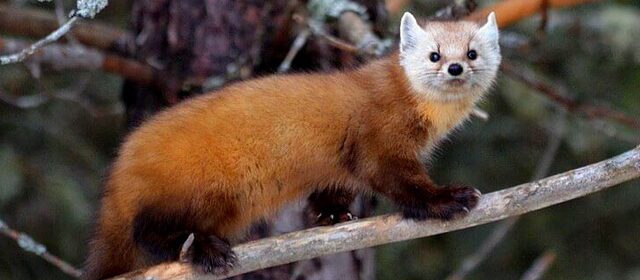
Pine Martens seem to be regular visitors to certain spots in Algonquin Provincial Park in Ontario at least during late winter. Whether seen frequenting the bird-feeding station along the Spruce Bog Trail or those feeders set below the deck of the Visitor Centre, these small furry mammals delight observers, young and old.
During one winter visit, we came upon three of these long, slender-bodied weasels hanging out at the Mew Lake Campground.
As we navigated the twists and turns of the frozen road betwixt the tall trees and deserted campsites, a cluster of photographers came into view, their cameras all trained in one direction.
Bob and I hastily left the confines of our car and tread softly towards the keen nature lovers, as if that was possible. Much to my chagrin, the snow crunched noisily beneath our boots. I was sure the photographers would be annoyed at our approach, but they motioned us forward and pointed to a tree branch about twenty feet away.
Pine Martens are more accurately known as American Martens and are members of the Mustelidae family of animals that includes wolverines, fishers, weasels and skunks. Across North America, there are several subspecies with the major differences between them being the colour of the fur and body size.
For the life of me, I could not differentiate between the three Pine Martens on site until I had time to look at my photos, and try as I might to get more than one in a frame, I failed to do so. These tree dwellers move with ease through the branches using their sharp, curved claws for climbing, and almost seem to defy gravity with their deftness of movement.
It was a unique opportunity to observe the Pine Martens in close proximity. When one of the Martens took a few seconds to survey the area from its perch, Bob and I had a good look at some of its anatomical features. Its large, black eyes are set into a fairly broad head that tapers to a pointed nose, quite weasel-like as far as it goes, and the Marten’s large, rounded ears and short limbs made it almost appear cuddly.
One cannot be fooled by the Pine Marten’s appearance, though, for these carnivores are quite ruthless. Opportunistic hunters that they are, Pine Martens administer a quick and powerful bite to the back of the neck of whatever prey they can catch.
As always, Bob and I share the responsibility of photographing and videotaping our wildlife encounters, if not caught off guard by an unexpected sighting that is.
That is just what happened when one of the three Pine Martens bolted from the forest behind me and made for the trees where the other two Martens were cavorting.
Back and forth, this Pine Marten ran because some well-intentioned photographer had put down peanuts for the Blue Jays, but the Marten outsmarted the birds. Pine Martens spend much of their time in trees but actually do most of their hunting on the ground.
Turning my attention back to the trees, I discovered one of the Pine Martens doing a bit of a balancing act. Its stance afforded a good look at the Marten’s feet that seem large for its body weight, but that is because of the large foot pads.
During the winter, Pine Martens grow longer hair between the pads on the soles of their feet. This fur helps to keep their feet warm but also creates a snowshoe effect that enables a Marten to walk on deep snow. During warmer months, a Marten uses its big feet to great advantage when swimming.
Pine Martens have long, shiny fur that is notably thicker and darker during the winter. It is during the coldest months that Pine Martens’ fur ranges from chestnut brown to almost black.
The colour of fur varies between members of the species, as well. This Marten is noticeably lighter in colour than the one in the previous photo, and its bib is almost white. The fur on a Pine Marten’s tail and legs is also darker compared to that on the rest of the body.
Pine Martens are generally nocturnal animals that lead a solitary life, but during spring and summer months, hunting occurs at any time of the day or night, occupying the Martens for up to 16 hours a day. Dawn and dusk is when Martens are most active as are the animals upon which they prey.
Bob and I thought it unusual that three Pine Martens were occupying the same vicinity because both sexes will not tolerate other Martens of the same sex in their home territory. On occasion, a male and female will be seen together, even with a juvenile in tow, and we did notice that one of these Martens was quite a bit smaller than the other two. Nevertheless, Pine Martens rarely socialize. They are shy and curious but also solitary and territorial creatures.
If two adult Pine Martens cross paths, they will usually growl and show their teeth. A male Pine Marten defends a good-sized territory, between 2.5-8 square kilometres (1-3 sq. mi.), and like other Mustelidae, he leaves a scent trail to mark his territory using strong scent glands as he goes from tree to tree. A complex pattern of vocalizations typifies communication between Pine Martens, and Bob and I did hear some subtle huffs and chuckles by the Martens that afternoon.
In North America, Pine Martens are found in a variety of mature, northern forests where hollow trees, thick undergrowth and crevices provide locations for dens and suitable habitat for prey, heavy snow guarantees winter hunting in tunnels carved out by red squirrels, and low-hanging branches and dense overhead cover provide adequate protection from predators. Fir and spruce forests are the preferred habitat, but even those forests dominated by pines, birch and aspen will sustain populations of Pine Martens. As far north as the treeline, forests harbour scattered pockets of this species because excessive trapping and loss of boreal forest habitat has reduced and fragmented their range.
It was a challenge to keep our lenses on the Pine Martens because these mammals, with their insatiable curiosity and appetite, leapt from tree to tree, zigzagged amongst the branches, and bounded over the mounds of snow. Epitomizing the curiosity and lightning-fast reflexes of the weasel family, the three of them delighted Bob and me for over an hour with their energetic acrobatic skills before they were seen fading into the distance as they raced off, like any wise creature, down the plowed road where the going was good.
Frame To Frame – Bob and Jean




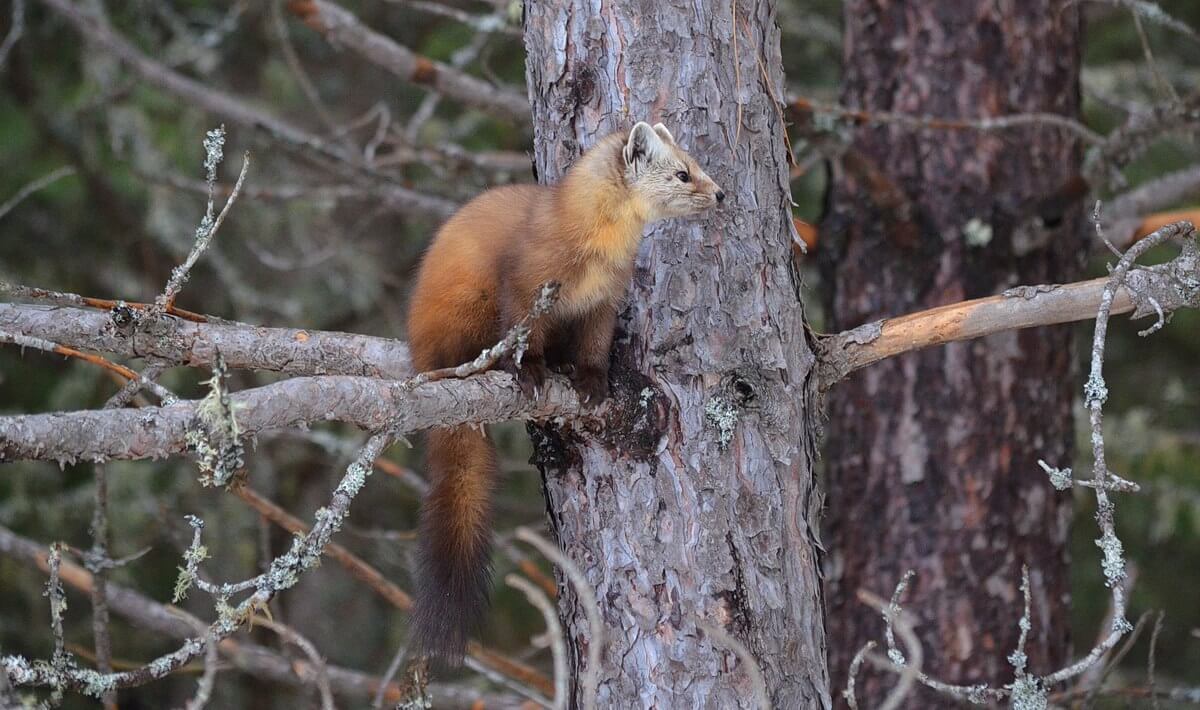
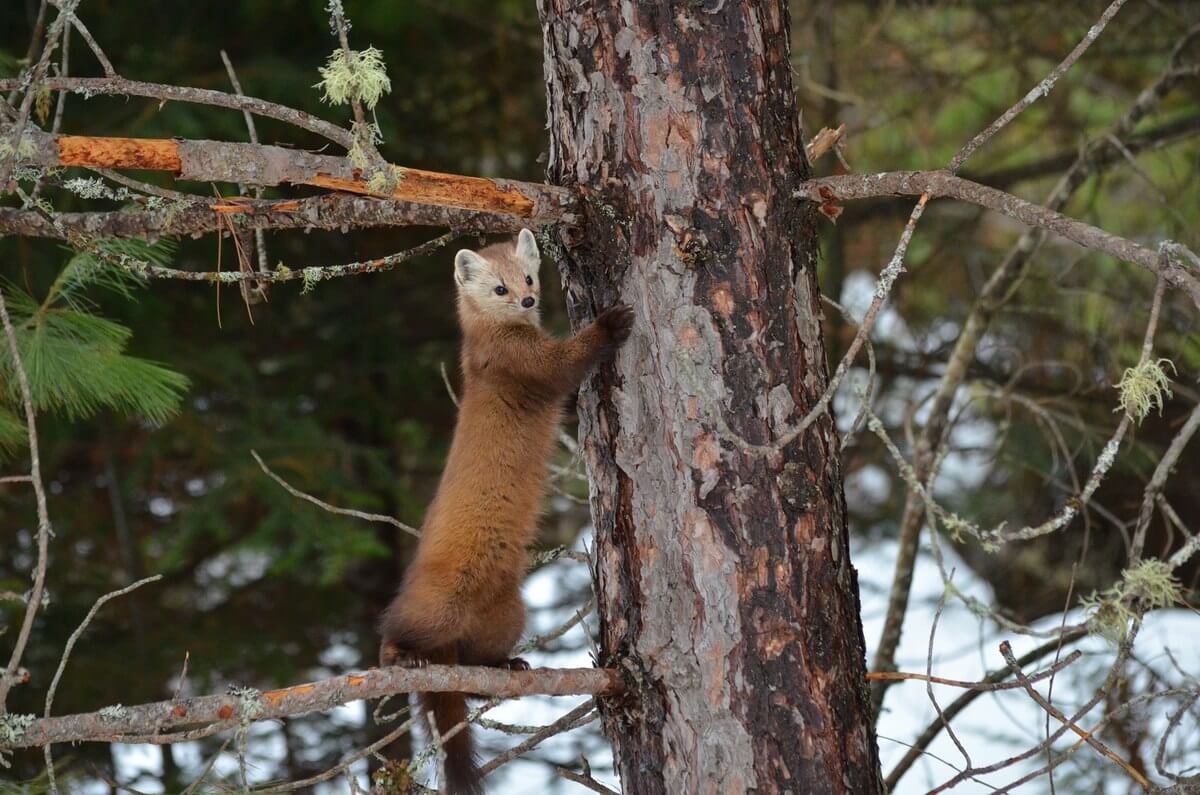


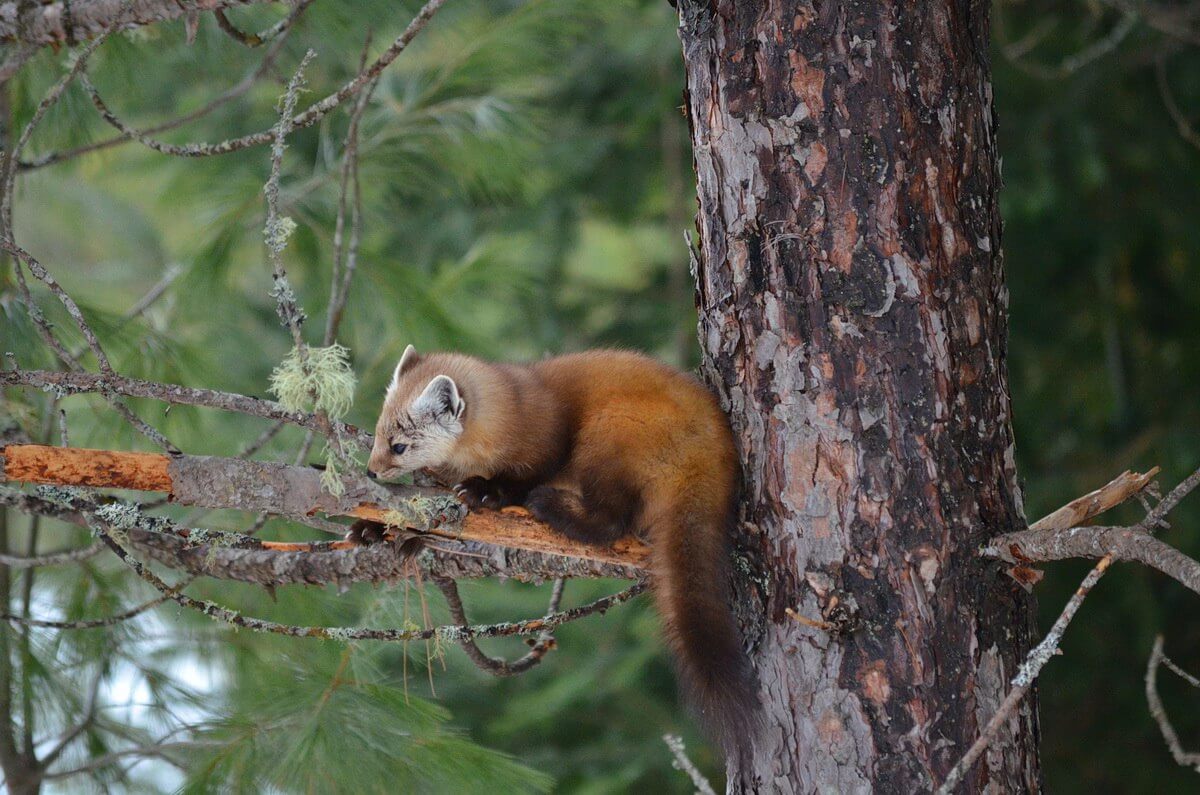
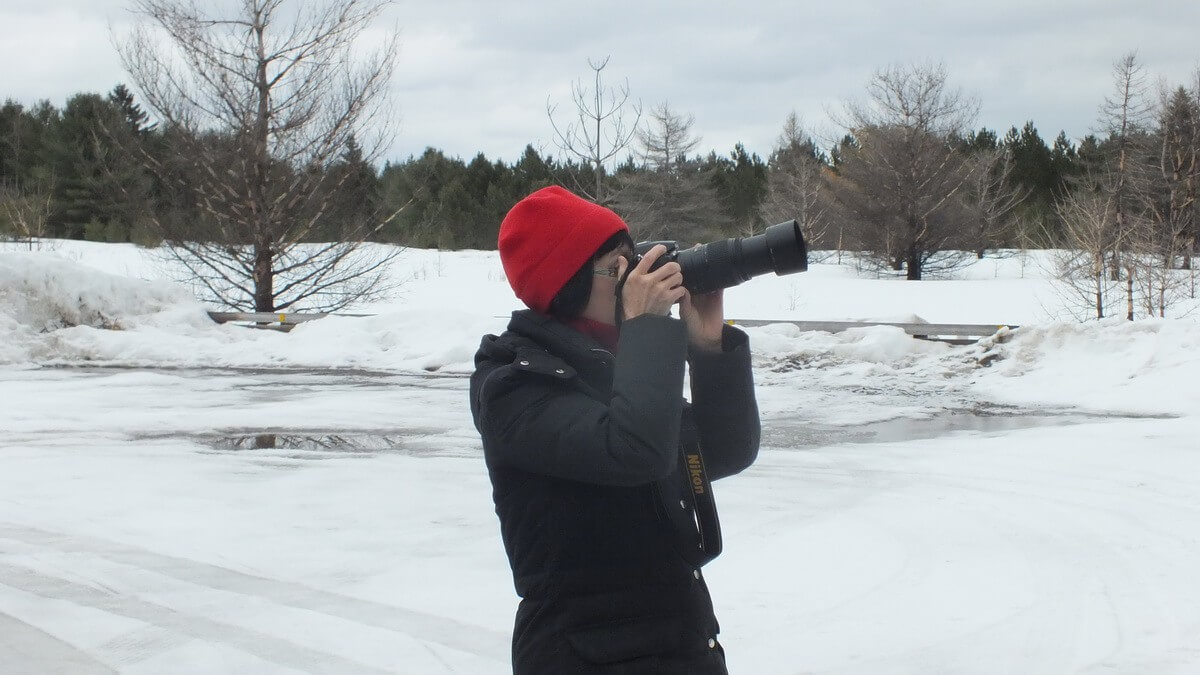
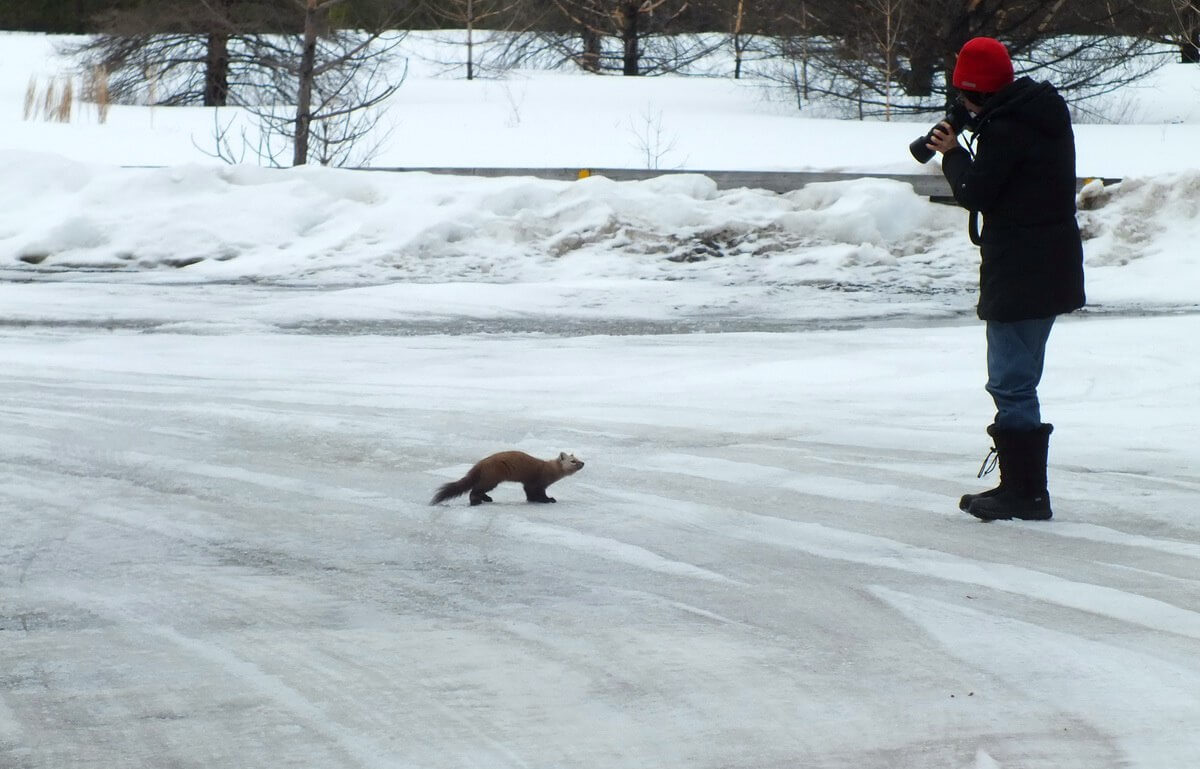
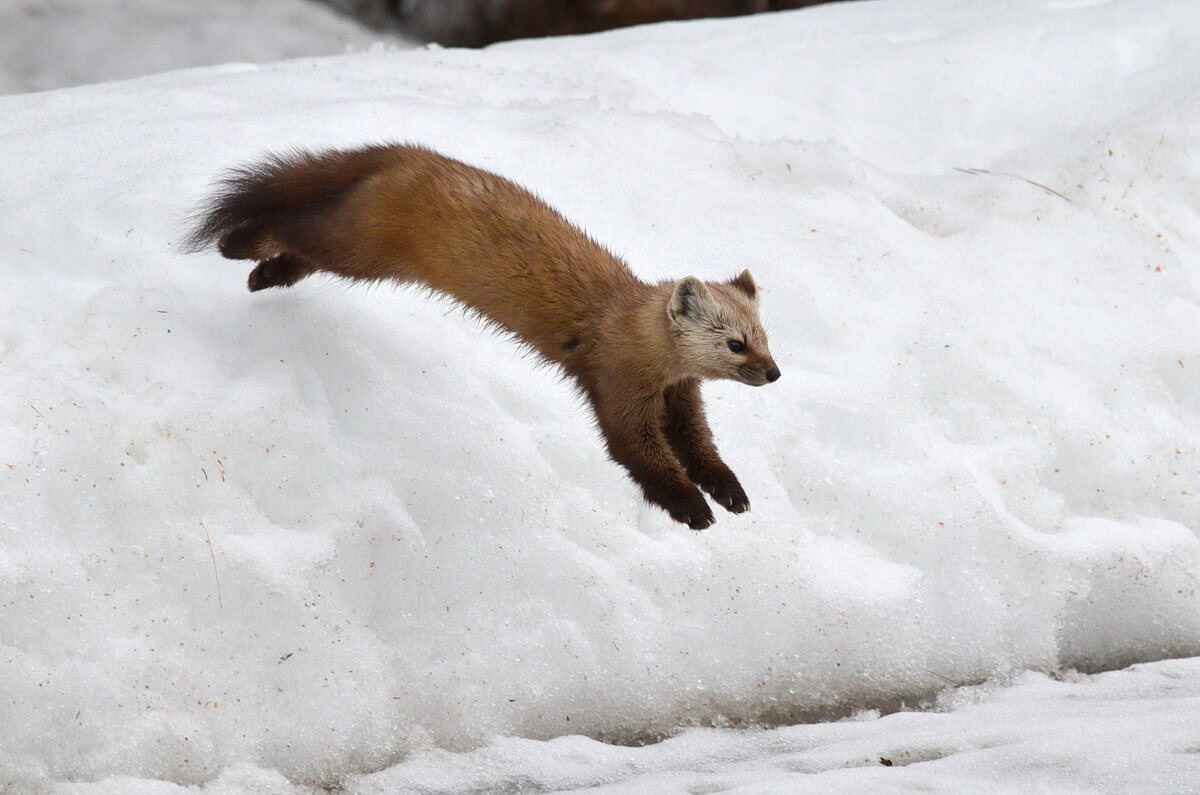
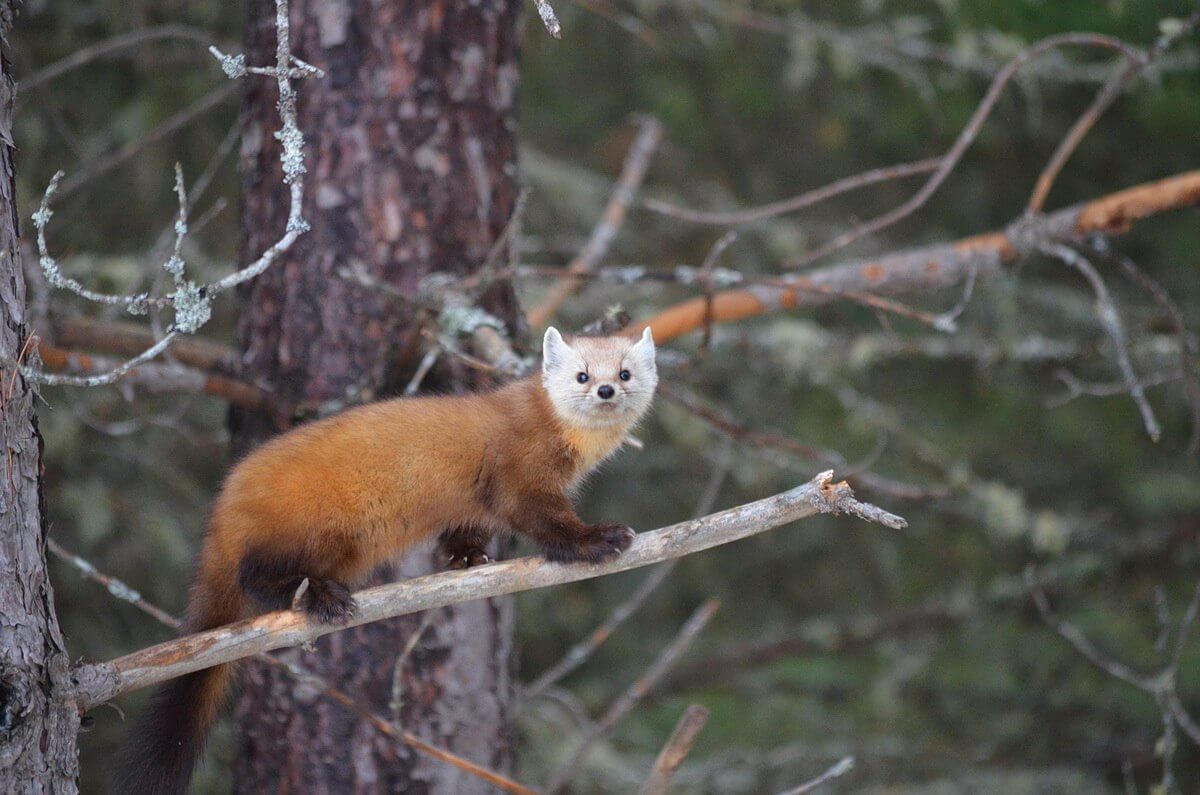
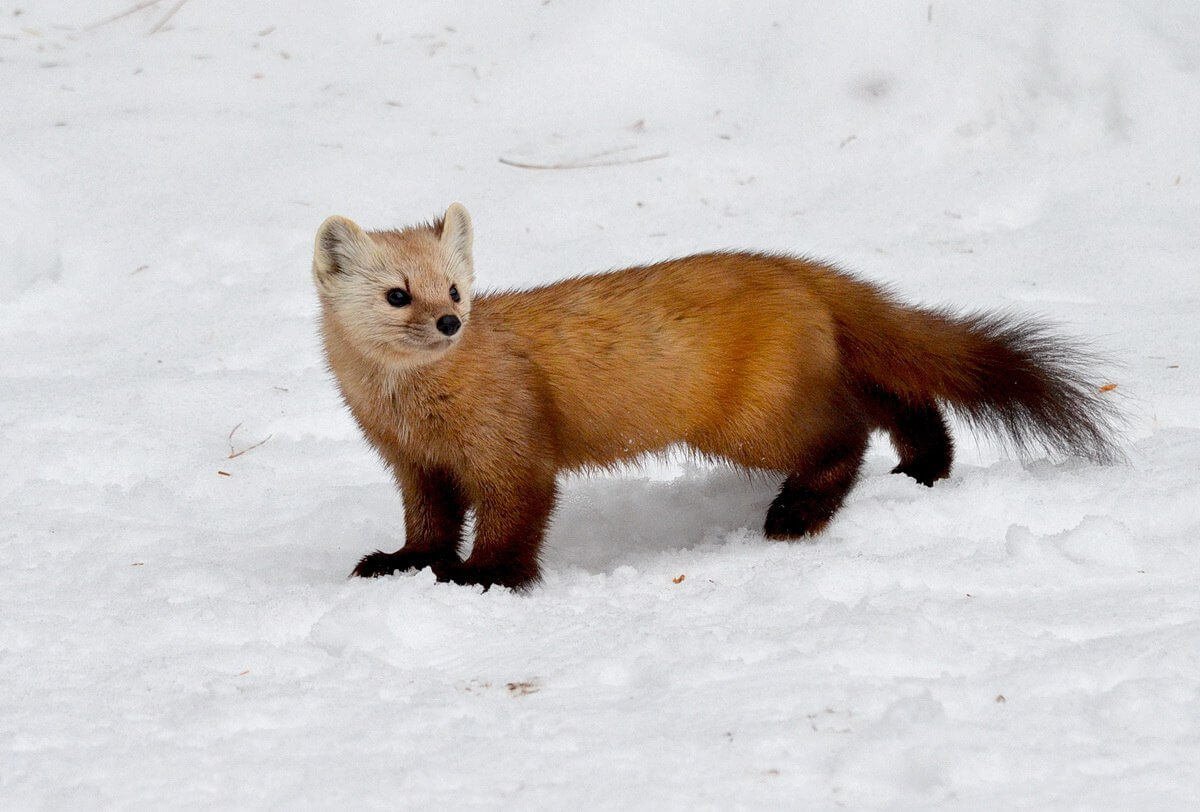
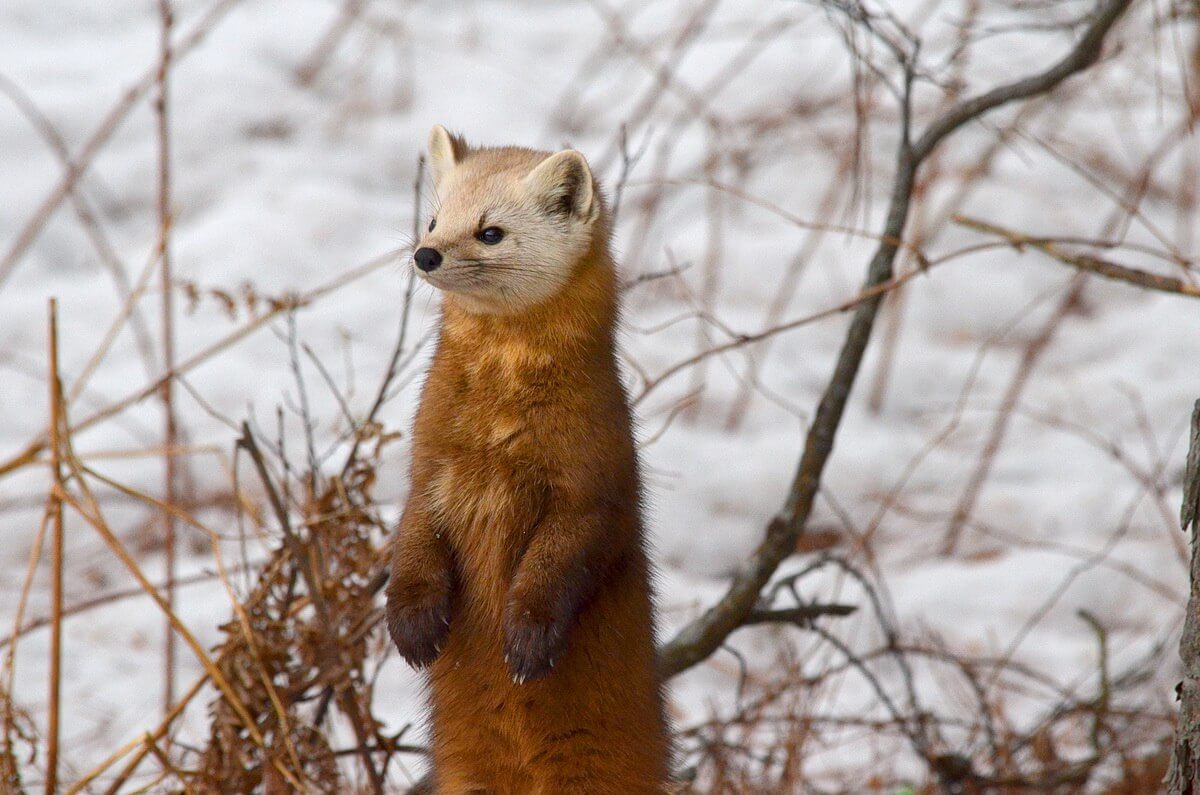
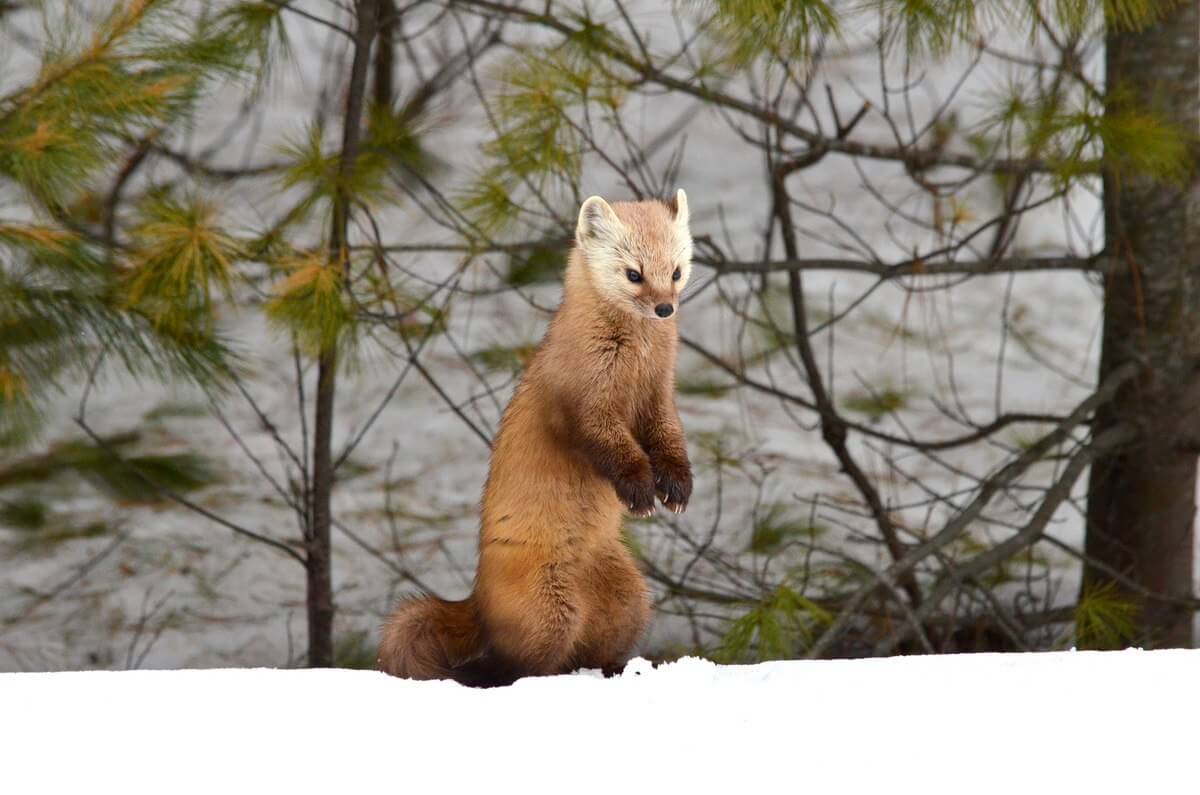
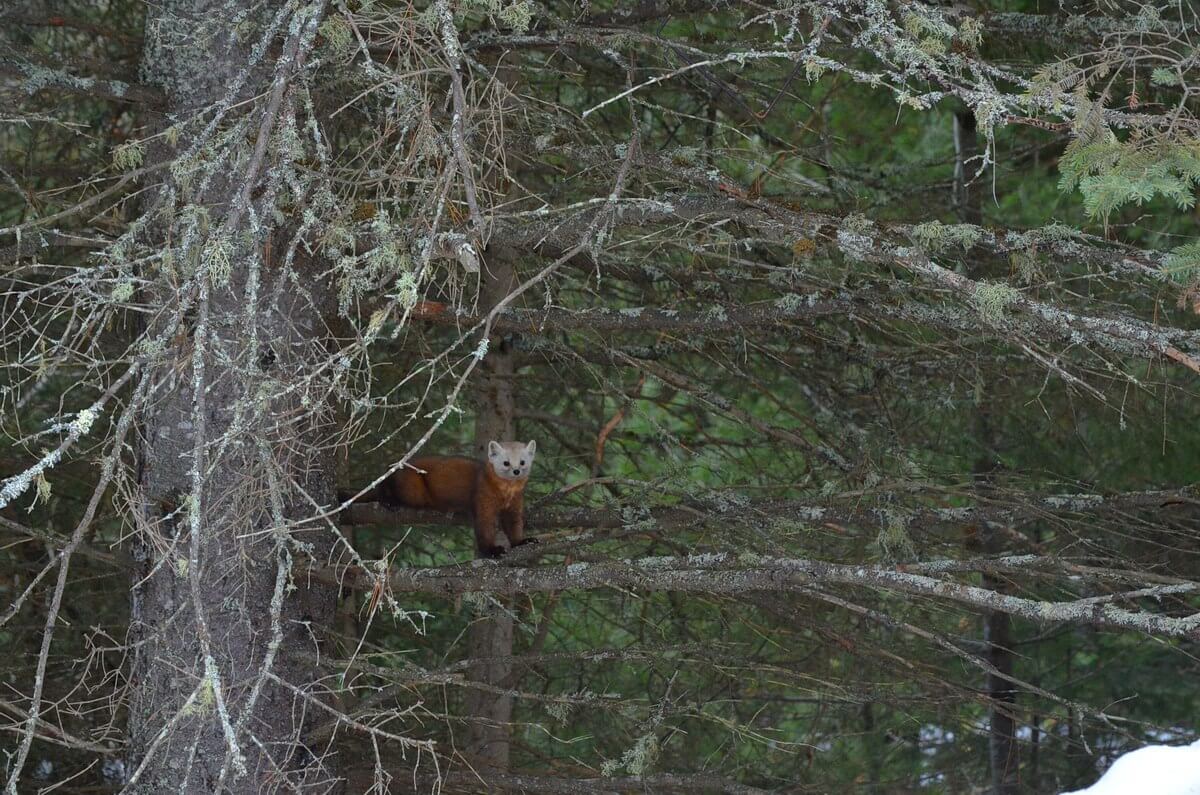



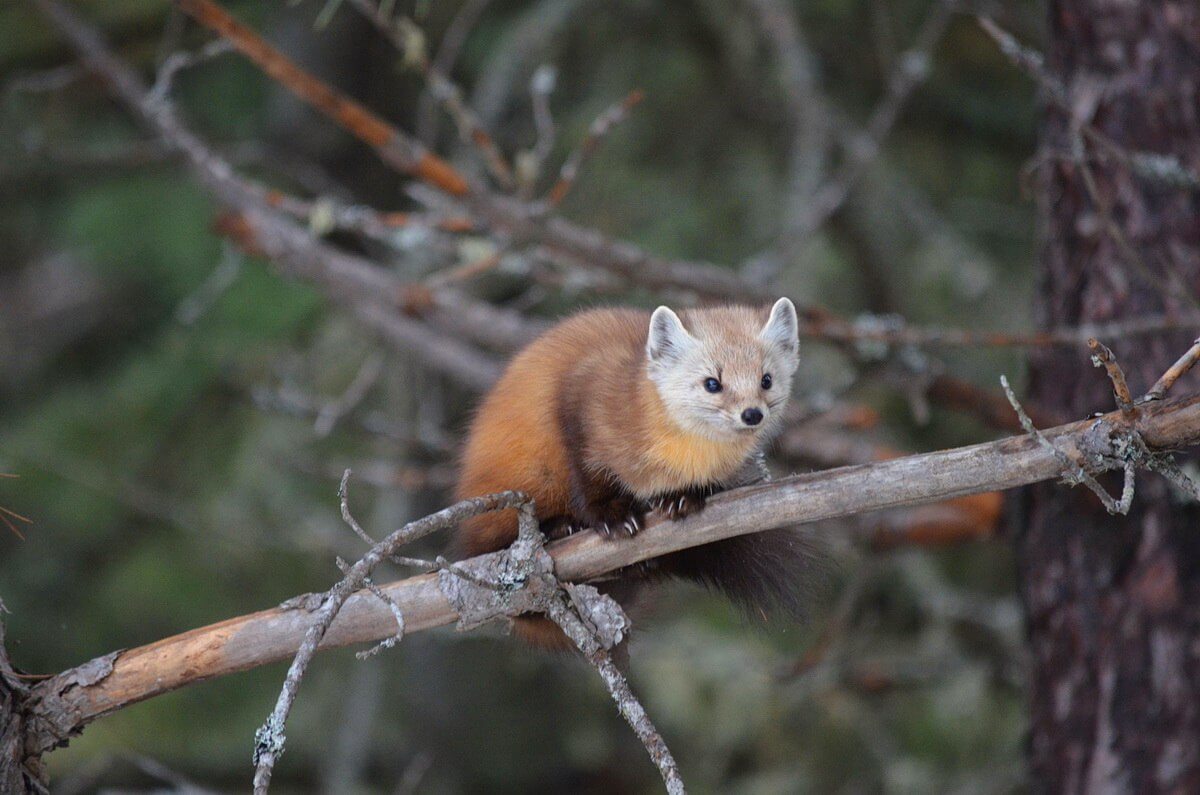
Great pictures and lovely summary of these really neat animals! Our cottage isn’t too far from Algonquin and I just saw my first pine marten while walking the dog this morning – so curious and photogenic!!!
That’s wonderful to hear, Janette. It is so exciting to see any species of creature for the first time. Thanks so much for checking out our blog and taking the time to send us a note. We really appreciate it.
Great Blog! Very informative and wonderful photography!
Thanks so much for your nice comments. We thoroughly enjoy getting out into nature and capturing special moments, but it is satisfying to know that others can share our experiences and appreciate our work afterwards.
What a lovely travel blog, thank you for sharing in so much detail.
We’re glad you liked our blog, Stephen. When we take so many photographs, it is fun to share them, but rather than just post photos, we like to impart some level of knowledge alongside them. We learn a lot in the process as well. Perhaps you’ll check out some of our other stories.